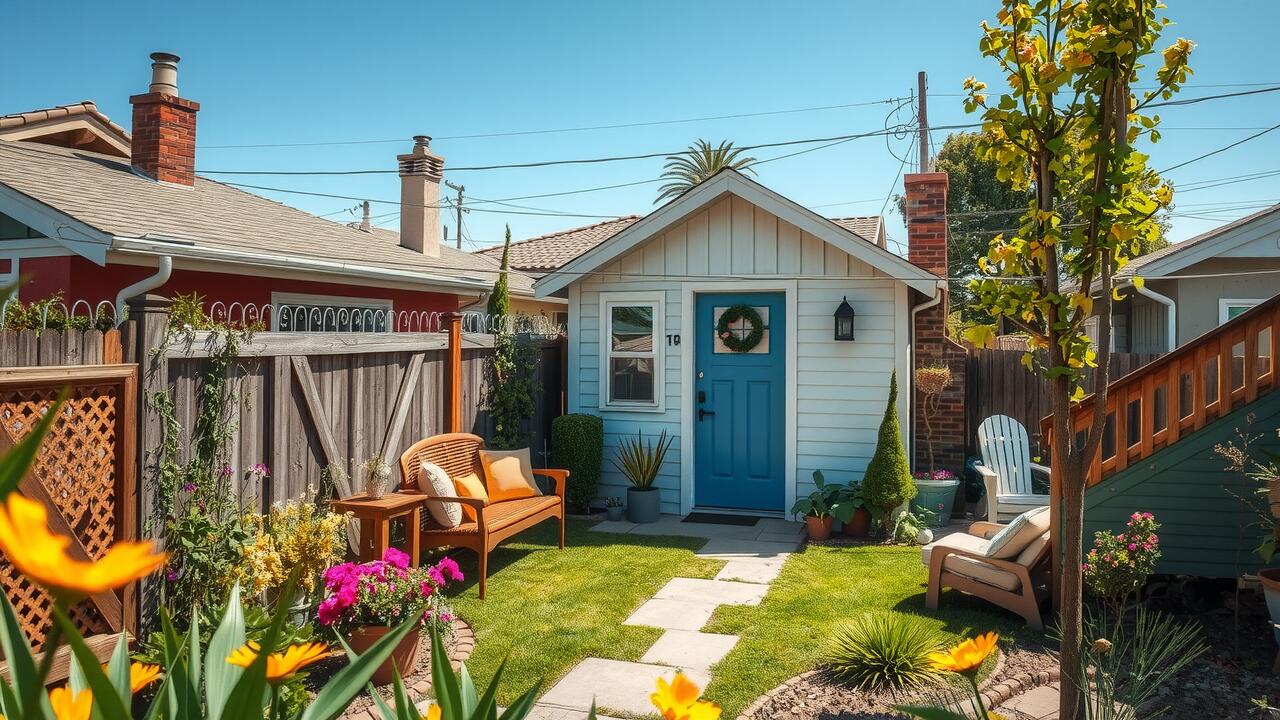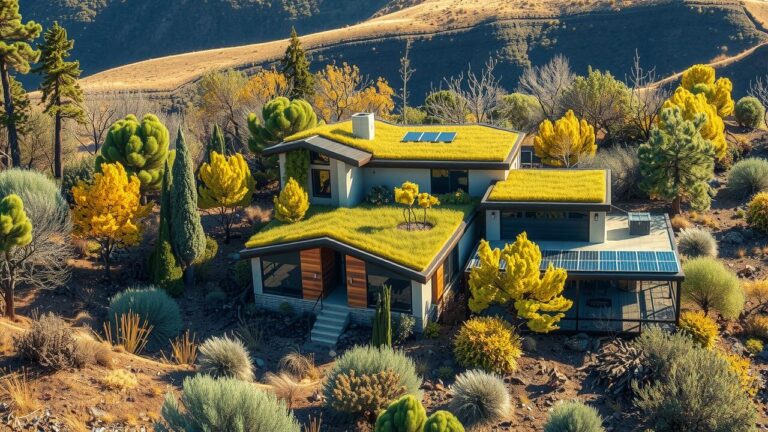Affordable Housing Solutions: The Rise of Accessory Dwelling Units (ADUs) in California
Affordable Housing Solutions: The Rise of Accessory Dwelling Units (ADUs) in California
Design and Construction Considerations
When planning an accessory dwelling unit (ADU), careful attention to design and construction is crucial. Homeowners should consider local zoning regulations and size limitations, ensuring that the unit complies with city codes. Layout and functionality play significant roles in optimizing space, particularly in smaller designs. Incorporating natural light and efficient storage solutions can enhance the living experience. Choosing durable, sustainable materials is also important, as it contributes to the longevity of the structure and supports eco-friendly practices.
The construction phase requires collaboration with skilled contractors familiar with ADU-specific requirements. This ensures that the build adheres to safety standards and permits. Pre-manufactured units offer a streamlined option, often reducing the time and complexity associated with traditional builds. Additionally, integrating energy-efficient systems, such as solar panels and high-efficiency appliances, can lead to cost savings over time. Thoughtful design choices can also promote indoor-outdoor connectivity, leading to a more enjoyable and functional living environment.
Best Practices for Planning an ADU
Thorough planning is essential to creating a successful accessory dwelling unit that meets both legal requirements and the needs of the occupants. Homeowners should begin by researching local zoning laws and regulations. Understanding the specifics, such as size restrictions, height limits, and parking requirements, will help avoid potential obstacles later in the construction process. It’s also wise to consult with architects or contractors experienced in ADU projects to ensure the design aligns with both personal preferences and local guidelines.
Incorporating sustainability into the planning phase can enhance the value and functionality of an ADU. Utilizing energy-efficient materials and appliances can reduce long-term utility costs and minimize environmental impact. Homeowners should consider the orientation of the unit to maximize natural light and ventilation. Additionally, planning for easy accessibility can make the ADU more adaptable, accommodating guests with varying mobility needs, and can enhance overall usability for all generations involved.
ADUs as a Solution for Multi-Generational Living
Accessory dwelling units offer an innovative solution for families looking to accommodate multiple generations under one roof. These self-contained units can provide the necessary privacy and independence for elderly parents, young adults, or even visiting relatives while still fostering close family connections. Families can enjoy shared spaces for gatherings while maintaining personal privacy, which is often essential for harmonious multi-generational living arrangements.
The flexibility of ADUs allows for various configurations, catering to diverse family needs. Whether a separate unit in the backyard or a converted garage, these structures can be tailored to meet the unique preferences of individual families. This adaptability not only provides housing solutions but also strengthens family ties by facilitating proximity without the challenges of shared living in a larger home.
Enhancing Family Dynamics with ADUs
Accessory Dwelling Units create an opportunity for families to live closer together while maintaining privacy and independence. Multi-generational households benefit from these structures, as they provide separate living spaces for grandparents, adult children, or young families. The flexibility of ADUs allows for various arrangements that support family dynamics, accommodating caregivers or offering space for children returning home after college.
This additional living space fosters communication and interaction among family members. Shared outdoor areas or communal spaces can enhance bonding experiences while offering quiet retreats within the ADU for focused activities. As families navigate the challenges of modern living, these units serve as a viable solution that strengthens relationships while promoting individual autonomy.
Environmental Impact of ADUs
Accessory dwelling units contribute positively to environmental sustainability by optimizing land use. By enabling more housing options within existing neighborhoods, they can help reduce urban sprawl. This approach conserves open space and minimizes the need for new infrastructure development, which often has significant ecological footprints.
The incorporation of sustainable building practices is increasingly common in ADU construction. Many homeowners are opting for eco-friendly materials and energy-efficient designs. These choices not only lower utility costs but also reduce greenhouse gas emissions over the lifespan of the dwelling. Implementing features such as solar panels, green roofs, and water-saving fixtures enhances the environmental profile of these units, fostering a more sustainable way of living.
Promoting Sustainable Living Practices
Accessory dwelling units contribute to sustainable living practices by maximizing land use in urban environments. These structures often utilize existing infrastructure, reducing the need for additional roads and utilities. By providing more housing options on single lots, ADUs can help ease housing shortages while minimizing urban sprawl. This efficient use of space encourages communities to grow vertically rather than horizontally, preserving green space and agricultural land.
In addition, many ADUs are designed with energy efficiency in mind. Features such as solar panels, energy-efficient appliances, and sustainable materials are increasingly common in new builds. This focus on eco-friendly construction not only lowers utility costs for residents but also reduces their carbon footprint. By promoting these principles within neighborhoods, ADUs can play a vital role in fostering greener communities that prioritize environmental sustainability.
Success Stories
California has seen a surge in successful ADU projects that showcase innovative designs and community benefits. In Los Angeles, a family transformed their garage into a cozy, modern workspace and rental unit. This not only increased their property value but also provided an affordable housing option in a city facing severe housing shortages. Community support played a significant role in bringing this project to fruition, demonstrating how localized efforts can address broader issues.
Multiple cities, including San Diego and San Francisco, have adopted policies that encourage such developments. In San Diego, a visually striking ADU brought a sustainable living solution to an urban neighborhood, featuring solar panels and water-efficient landscaping. Residents embraced the project, which exemplified harmonious integration into the community, while addressing both environmental and housing challenges. These examples illustrate the potential of ADUs as both innovative housing solutions and vital components of urban planning.
Innovative Designs and Community Examples
In California, various innovative designs have emerged, showcasing the versatility of accessory dwelling units. Many homeowners are transforming underutilized spaces, such as garages and basements, into functional living areas. This adaptability is evident in projects that feature modern aesthetics combined with sustainable materials, catering to both aesthetic preferences and environmental concerns. Some examples highlight the use of eco-friendly elements like solar panels and green roofs, enhancing energy efficiency while maintaining a contemporary look.
Community examples also illustrate the growing acceptance of ADUs. Cities are increasingly encouraging these developments through streamlined permitting processes and zoning changes. Notable projects in neighborhoods like Los Angeles and San Diego have garnered attention for their thoughtful integration into existing landscapes, fostering a sense of cohesiveness while providing much-needed housing options. Residents report positive responses to these units, as they assist in addressing housing shortages and support diverse living arrangements.
FAQS
What is an accessory dwelling unit (ADU)?
An accessory dwelling unit (ADU) is a secondary housing unit located on the same lot as a primary residence. ADUs can be detached structures or attached to the main house, offering additional living space for various uses.
How can ADUs help with affordable housing in California?
ADUs provide an affordable housing option by increasing the number of available housing units without the need for extensive new construction. They can be rented out to generate income, accommodate family members, or serve as a more cost-effective housing solution in high-demand areas.
What are some best practices for planning an ADU?
Best practices for planning an ADU include understanding local zoning laws and regulations, considering the design to maximize space and light, ensuring proper access and utilities, and engaging with the community to address any concerns.
How do ADUs support multi-generational living?
ADUs offer a practical solution for multi-generational living by providing separate yet nearby living spaces for family members. This arrangement allows families to maintain close relationships while offering privacy and independence.
What are the environmental benefits of building ADUs?
ADUs promote sustainable living by utilizing existing infrastructure and reducing urban sprawl. They can be designed to incorporate energy-efficient features, decreasing the overall carbon footprint and encouraging a more sustainable community living model.







